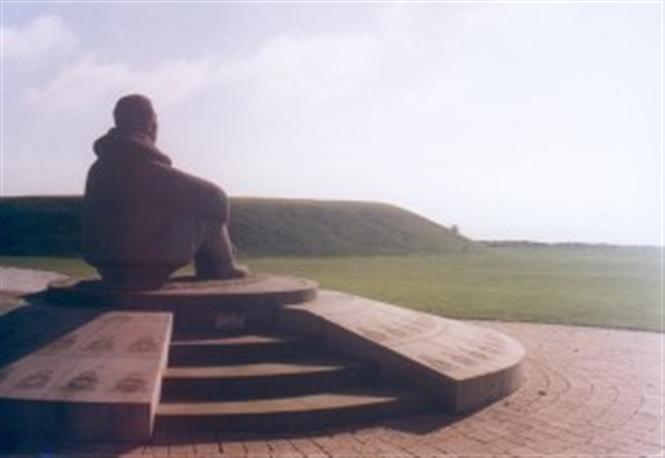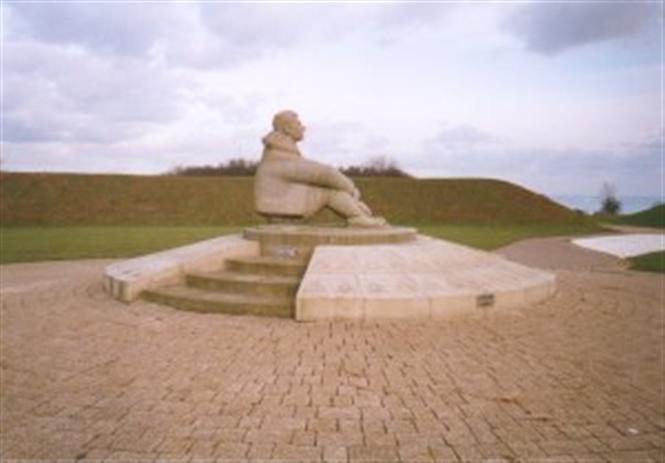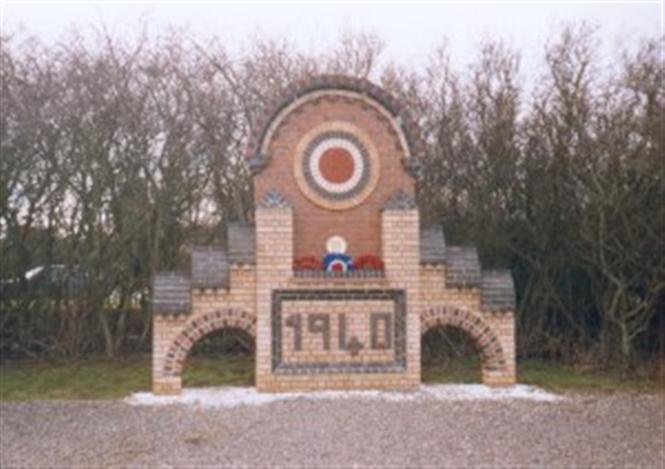Battle of Britain Memorial
Description
The Memorial is recessed in the cliff top with banked up edges for viewing. It is in the form of a three bladed propeller with a pilot at the centre. The three blades, originally chalk cut into the cliff top, were modified in July 2000 and replaced with white bricks. The central circular platform is of Bickstead Blue Stone, and the surrounding area is of Sandstone.
History
The Battle of Britain Memorial remembers those who lost their lives from July to September 1940 fighting a prolonged battle in defence of Britain against an experienced and numerically superior German Luftwaffe .
The Battle of Britain officially commenced on 10 July 1940 with Germany attacking coastal convoys in an effort to draw RAF fighters into battle. These attacks were followed by brief and unsuccessful raids on British radar installations and concerted raids against RAF airfields in southern and south-western England. Luftwaffe bombers suffered heavy losses to RAF fighters - Spitfires and Hurricanes - but fighter losses were about even.
The Luftwaffe suffered from over-confidence, changing operational priorities, and a misreading of RAF strength, losses and aircraft production figures. Having failed to defeat the RAF, Hitler postponed the planned invasion of England, Operation Sealion, in September 1940, but fighting continued into the winter.
Twenty-five Australians were considered eligible for the Battle of Britain clasp to the 1939–45 campaign medal. Other Australians flew during the battle with RAF Bomber Command and Coastal Command, but the total number involved in the battle did not exceed 35. At least 10 Australians were killed in action, a small fraction of the 537 RAF Fighter Command pilots who died.
Prime Minister Churchill praised all Battle of Britain pilots with his famous words: "Never before in the field of human conflict has so much been owed by so many to so few."
The deeds of some Australian pilots in the Battle of Britain is in the official history. Air war against Germany and Italy 1939–1943 included the story of Flight Lieutenant Desmond Sheen of 72 Squadron RAF, who destroyed five German aircraft. Seven other Australians became aces during the battle by shooting down five or more enemy aircraft. One, Pat Hughes of Cooma, who shot down 14 German aircraft, was among the leading ten aces of the battle.
Construction Information
The Memorial was the idea of Wing Commander Geoffrey Page DSO DFC, himself a veteran of the Battle, that there should be a permanent national memorial. The cliff tops of Kent, over which most of the Battle was fought, was an appropriate location.
Location
England.
The Battle of Britain Memorial is situated on the Cliffs just outside Capel-le-Ferne just off the B2011 about 2 miles from Folkestone and is signposted from the A20.
The Memorial is only open between 1st of April and 11th of November.


